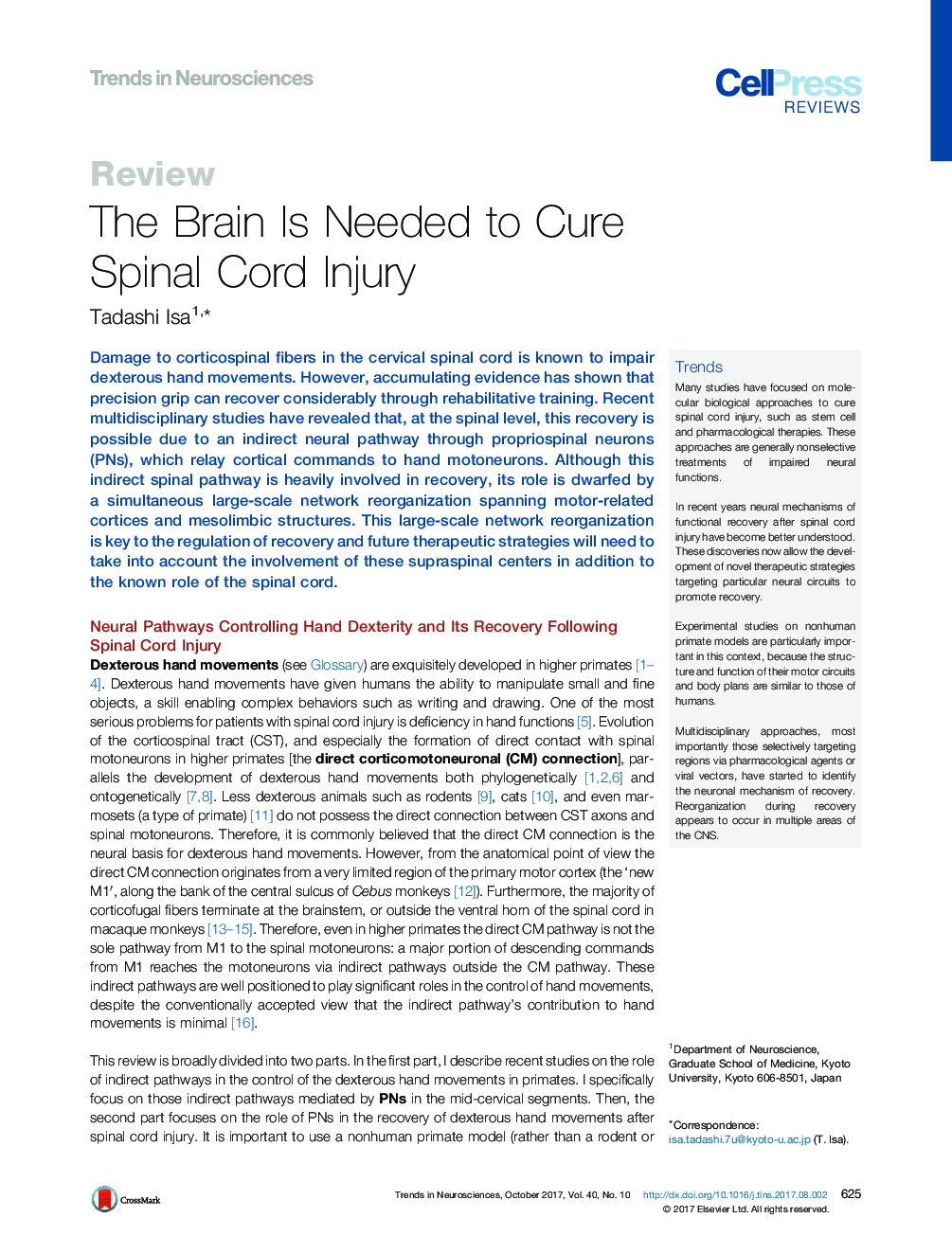| Article ID | Journal | Published Year | Pages | File Type |
|---|---|---|---|---|
| 5739188 | Trends in Neurosciences | 2017 | 12 Pages |
Abstract
Damage to corticospinal fibers in the cervical spinal cord is known to impair dexterous hand movements. However, accumulating evidence has shown that precision grip can recover considerably through rehabilitative training. Recent multidisciplinary studies have revealed that, at the spinal level, this recovery is possible due to an indirect neural pathway through propriospinal neurons (PNs), which relay cortical commands to hand motoneurons. Although this indirect spinal pathway is heavily involved in recovery, its role is dwarfed by a simultaneous large-scale network reorganization spanning motor-related cortices and mesolimbic structures. This large-scale network reorganization is key to the regulation of recovery and future therapeutic strategies will need to take into account the involvement of these supraspinal centers in addition to the known role of the spinal cord.
Related Topics
Life Sciences
Neuroscience
Neuroscience (General)
Authors
Tadashi Isa,
